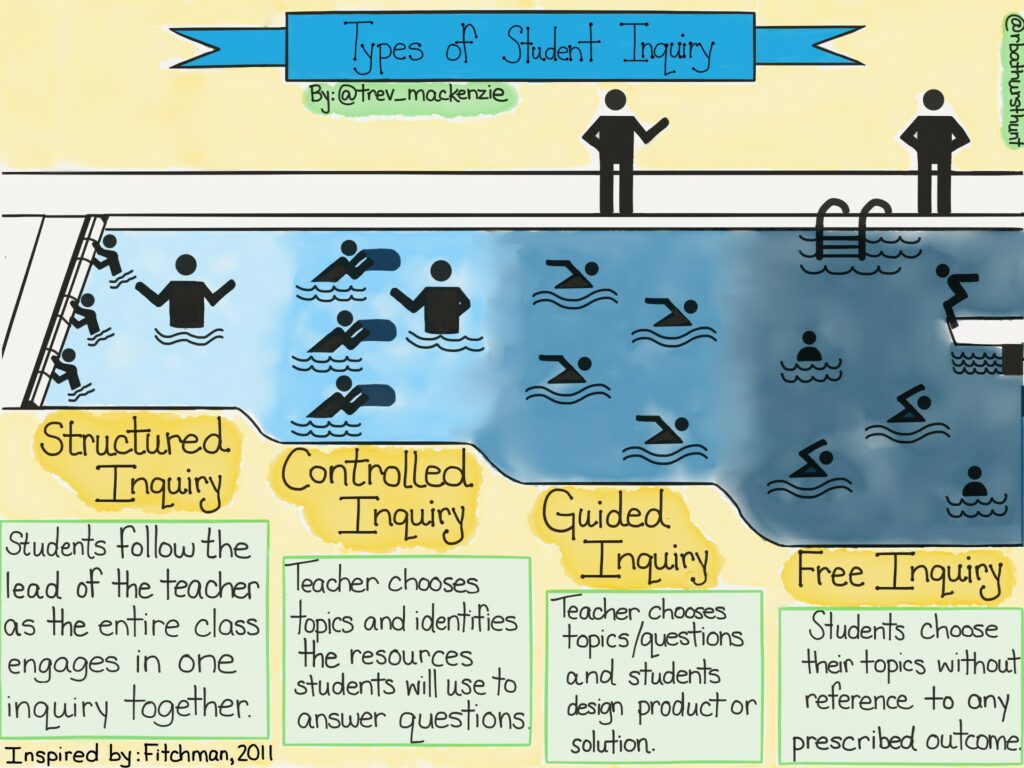On October 1st, 2024, Educational consultant, teacher, and author Trevor Mackenzie spoke to us about “Inquiry Based Learning.” We discussed classroom engagement, how to give feedback to students, and assessment strategies.
According to Trevor, classrooms with curious students experience better academic performance, increased attendance, reduced behavioural disturbances, and stronger peer-to-peer and student-to-teacher relationships.
“Curiosity is like a campfire; people naturally gravitate towards it.”
Trevor Mackenzie, October 1, 2024.
So how do teachers encourage curiosity? First, the teacher must model curiosity themselves. He states “curiosity is like a campfire; people naturally gravitate towards it.” Students need to be given the opportunity for “turn and talk” learning so that they can make assessments of their knowledge with peers, and ask questions that they may not otherwise put their hand up to ask. Utilizing ‘co-constructive’ activities; activities which allow students to figure things out for themselves, is a practical method to foster curiosity. Sitting with students and conversing with them about the topic can also increase attention and encourage the students to think about the topic.
These can be great opportunities to provide feedback to students. It is crucial to provide helpful feedback. Valuable feedback has three qualities: it needs to be kind, specific, and helpful. However, valuable feedback can be overlooked by a student if it is given next to a grade. Trevor recommends having students self-assess and discuss with the instructor about what their mark should be.

I enjoyed Trevor’s presentation style and content. He provided the class with practical inquiry-based strategies to add to our teaching repertoire, and gave us realistic expectations for utilizing his ideas in the classroom.